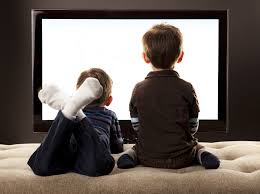 Although using a television in animation or any film is a good way to portray important information to the viewer, I don’t know if it is a good idea to use it in an abundance of children’s films.
Although using a television in animation or any film is a good way to portray important information to the viewer, I don’t know if it is a good idea to use it in an abundance of children’s films.
Last year in health psychology, we learned the effects of technology on adult brains and in the developmental stages as well. Many psychologists suggest that we should limit the amount of technology or “screen time” – i.e. phone, ipad, computer, television to ensure that we aren’t getting addicted to tech. Some even go to the length that children should be without technology up to the age of three years old so the child can reach all of their milestones.
On the other hand showing children in movies that the television is a place of information could have a positive effect. Maybe if we continue to portray the television as a source of knowledge children will treat it as such.In a child’s early years, they are more able to learn new things. Kids absorb information like a sponge and knowledge spreads over them like wildfire. This is why children are more able to pick up a secondary language if they are taught it when they’re young.
Like many arguments, there is always a space for middle ground. If a child is watched and the parents control what information they are exposed to, you could have a compromise between the two ends of the spectrum. Personally, I like to think that this would be me as a parent. I would not want to cut technology from their lives, because this could cause a culture shock once it is introduced. I would diffidently monitor what they access and for how long in early development, to ensure that their other needs for growth are met before tech bombards their brains.